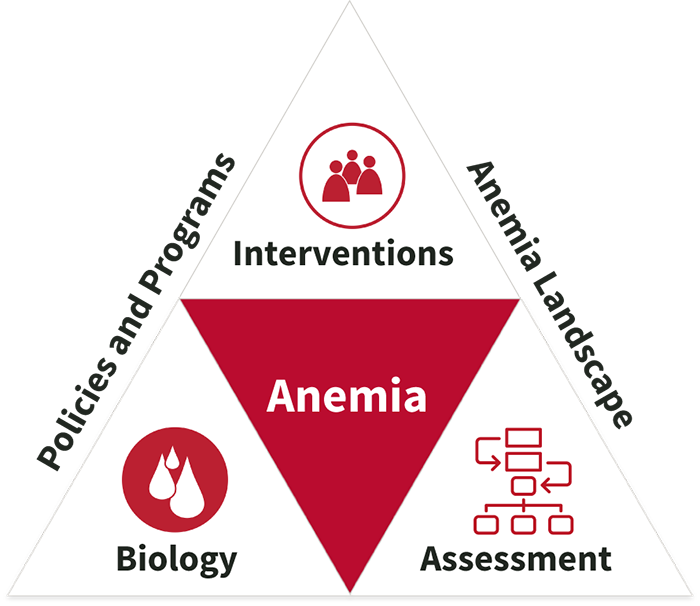The various causes of anemia require diverse and context-specific strategies to strengthen multi-sectoral anemia policy and programming. Policy-makers and program planners have developed population-level policies to reduce anemia to allow for efficient allocation of available resources.
To reach populations in need, translate policies into programs. Practitioners should design these programs designed with an eye for sustainability by incorporating the latest information on cost and cost effectiveness, with the goal of reaching the populations most vulnerable to micronutrient deficiencies and poor health.
We found 62 resource(s)
Four Malaria Success Stories: How Malaria Burden was Successfully Reduced in Brazil, Eritrea, India and Vietnam
Technical Report published by American Journal of Tropical Medicine and Hygiene in
This report documents the malaria control efforts of Brazil, Eritrea, India, and Vietnam and discusses key factors in the success of these programs, including epidemiological, technical, programmatic, partnership, and financial aspects.
How to Add Deworming to Vitamin A Distribution
Guideline/Guidance published by WHO, UNICEF in
This manual, which is intended for use by health planners, contains information on the benefits of deworming in preschool children, practical information about deworming drugs, and provides insights into experiences from three countries where deworming has been added to existing vitamin A distribution programs.
Measuring Performance: A Strategy to Improve Programs
Journal Article published by Journal of Nutrition in
This article stresses the importance of evaluation as a tool for improving the design and implementation of effective programs to reduce iron deficiency anemia and advocate for their continued and increased support. Concepts in program evaluation are applied to specific issues relevant to iron programs, and the choice of indicators for evaluating…
Prevention and Control of Iron Deficiency: Policy and Strategy Issues
Journal Article published by Journal of Nutrition in
This article highlights the lack of mechanisms at the country and global levels to ensure that effective measures for prevention and control of iron deficiency are implemented.
Qualitative Research Instrument on Perceptions of Anemia and Use of Iron Tablets—The Indramayu Project, Indonesia
Technical Report published by The World Bank in
This research instrument, which was developed by the Manoff Group for the USAID-funded MotherCare Project, was used in formative research for the Indramayu Project. One component of research tested ways to improve the existing iron supplementation program for pregnant women in this Indonesian region. The results were used to develop messages for…
MotherCare Indonesia Resources
Information, Education and Communication Materials published by MotherCare in
The MotherCare Project, a USAID-funded program, was aimed at preventing maternal and perinatal mortality and morbidity. The project included activities that engaged in a series of applied research initiatives and offered short-term technical and training support. Examples of resources developed for use in Indonesia include pill reminders and other…
Pagination
- First page
- Previous page
- 1
- 2
- 3
- 4
- 5
- 6
- 7
- 8



